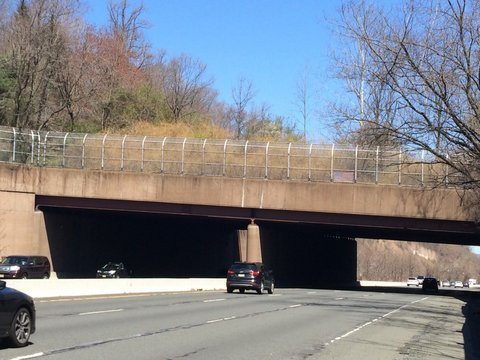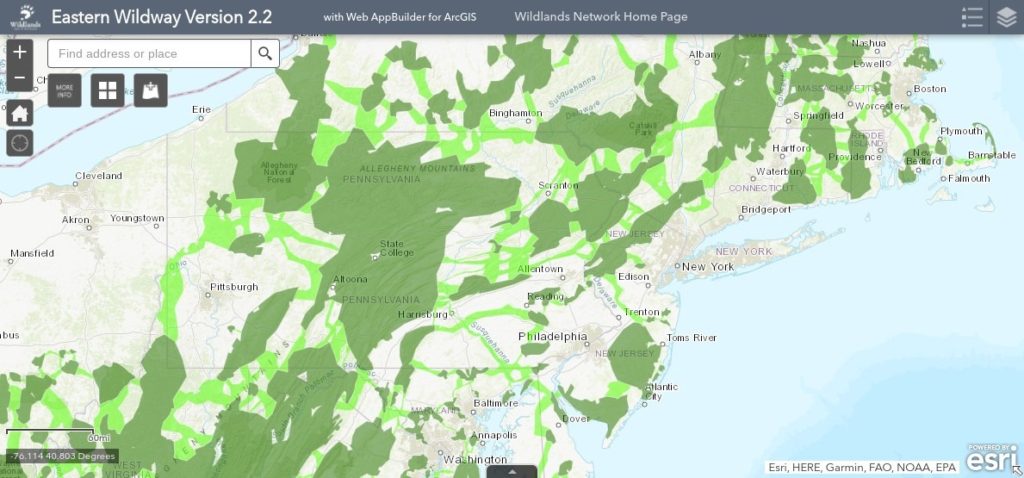By Anthony Bastian, Pennsylvania Habitat Connectivity
What is ecological connectivity?
As readers of this blog well know, Pennsylvania’s citizens have been blessed with the biggest forests between New York City and Denver. These sizable swaths of land can be the rebirth of the great Eastern forest. Consider the PA Wilds, Laurel Highlands, South Mountain, and Susquehanna Highlands. Think of the landscapes closer to urban areas, such as the Lehigh Valley, the Poconos, Kittatinny Ridge, and the Schuylkill Highlands. Consider all the state parks, game lands, and land trust forests. These core areas contain multiple wildlife habitats that need ongoing protection, restoration, and especially connection. Connection helps make whole what human infrastructure, in particular, all our roads and development, has separated and divided. Ecological connectivity is simply the ability of native species to move across these separated habitats.
What are wildlife corridors?

Implementing connectivity on the ground means linking core wildlife habitats via wildlife corridors in order to restore and preserve biodiversity. A wildlife corridor is a space that facilitates the movements of wildlife populations (including plants!). They are avenues where more wide-ranging animals can travel and in which plants can propagate. Good mapping, studies, and ground-truthing research determine the existence of these corridors. Functional corridors, such as a riparian buffer, recognize that a given landscape facilitates movement of certain species. Structural corridors are more intentional; they are supported by human infrastructure, such as culverts, greenways, or strategically placed fencing to safely guide animals.
Why are wildlife corridors important?
Biodiversity is enhanced by creating this connected ecosystem bigger than the sum of the parts. This movement is necessary on a daily basis for food, or seasonally for den sites for many animals. Youngsters must disperse for their own territory. Adults need to find genetically diverse mates. Climate change now necessitates that animals migrate further north every year in order to remain in their natural habitat.
Coalition around supporting wildlife corridors is growing
There has been a lot of activity surrounding wildlife, (aka conservation), corridors this past month in the Commonwealth. This topic is getting more exposure and interest at the key state agencies, especially with DCNR, the Game Commission, and Fish & Boat Commission. There is legislation pending action in the Pennsylvania House Tourism and Recreational Development Committee. Pennsylvania Habitat Connectivity summed-up the issue here back in February. But, for those who prefer sight & sound, here is a short video instead (and here it is on Instagram)! Wouldn’t it be wonderful for our wildlife, and for us outdoor enthusiasts, to more easily move from forest to forest? Look at the updated map that supports our state’s Wildlife Action Plan, turn on the layers that show state lands, and you can see the potential for how connecting these landscapes via functional, and even structural, corridors would be a huge benefit to the overall ecosystem, especially biodiversity.

Expert panel kicked things off on June 11th
At the state level, there has been a campaign led by the Endangered Species Coalition to move the needle on ecological connectivity in Pennsylvania. More campaign events and actions will happen over the coming month. Led by Mireille Bejjani, a team of thirty environmental activists pulled together a “Connecting Wildlife, Connecting Communities” panel that focused on several aspects of connectivity, including less vehicle-animal collisions, hiking trails, and energizing the economies of rural communities.
To review or share the webinar, you can find the video recording here and the Facebook livestream here.
Panelists for the webinar include:
- Lamar Gore, John Heinz National Wildlife Refuge Manager, USFWS
- Laura Jackson, Conservation Chair, Pennsylvania Society for Ornithology
- Dan Buford, Ecologist, Federal Highways Administration
- Peter Hudson, Former Director, Huck Institutes of the Life Sciences
- Casey Schneck, Program Administration, Keystone Trails Association
- Special Guest: PA State Representative Mary Jo Daley, District 148
Future Engagements
And now, there are more opportunities for you to hear about wildlife corridors in our state! Starting this week, we will be hosting a speaker series spotlighting existing or potential wildlife corridors throughout Pennsylvania. These spotlights will feature a range of different types of habitats from locations across the state
At these virtual events, we are bringing together a variety of professionals to share the area they represent, their experience on the topic, and showcase potential or existing corridor efforts in Pennsylvania to educate residents on what implementing more of these corridors could look like.
Below is the lineup for our speaker series. Please register for each spotlight you’re interested in via the links included. We’re still finalizing some dates and times for the later spotlights, but you can still register now to make sure you receive all of the necessary information.
1. Harvey’s Creek Tract Corridor
Bonnie Yuscavage (Greater Wyoming Valley Audubon Society)
Thursday, June 18th at 7 pm. REGISTER
2. Kittatinny Ridge
Lehigh Gap Nature Center, Hawk Mountain Sanctuary, and Audubon PA
Thursday, July 2nd at 7 pm. REGISTER
3. Riparian Buffer Zones
Crawford County Conservation District
Thursday, July 9th, time TBD. REGISTER
4. A Different Type of Corridor
Dan Lynch (PA Game Commission) and Lillie Langlois (Penn State University)
TBA, week of July 13th. REGISTER
5. Pennsylvania Elk Country
Haley Stapleton (Keystone Elk Country Alliance)
TBA, week of July 20th. REGISTER
6. Middle Creek Wildlife Management Area
Lauren Ferreri (PA Game Commission)
TBA, week of July 27th. REGISTER
For more information, please contact Anthony Bastian at pennswoodswildlands@gmail.com or Mireille Bejjani at mireille@endangered.org